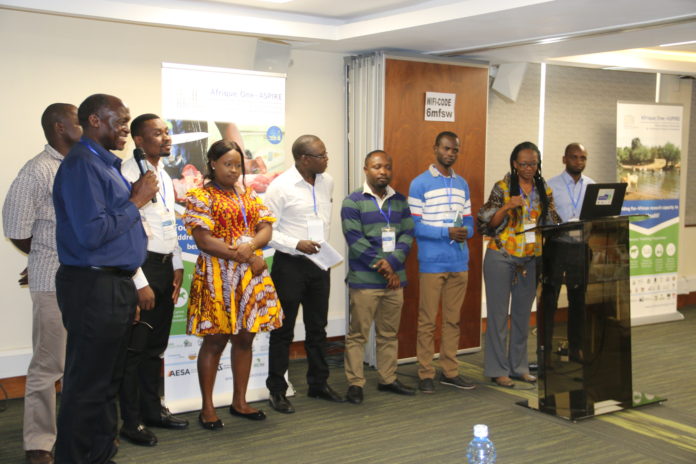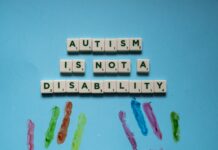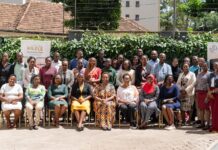By Katheru Njagi
FOR DECADES, TB HAS POSED A BIG CHALLENGE FOR MEDICS BECAUSE OF THE DISEASE’S ABILITY TO RESIST TREATMENT. SCIENTISTS ARE CALLING FOR NEW APPROACHES TO FIGHT IT, INCLUDING ENROLLING FOR HIGH LEVEL RESEARCH TO INVESTIGATE THE DISEASE CAUSING BUG. ONE OF THESE IS GLORIA IVY MENSAH, A BENEFICIARY OF THE AFRIQUE ONE ASPIRE FELLOWSHIP PROGRAMME, WHO TAKES TALK AFRICA READERS THROUGH THE HIGHS AND LOWS OF DEALING WITH SUCH AN ELUSIVE BUG.
What does Gloria Ivy Mensah do?
I am a post doctorate fellow with the Noguchi Memorial Institute for Medical Research. I am also a beneficiary of the Afrique One ASPIRE scientific research programme working on tuberculosis.
The research programme is training 60 fellows from East and West Africa, where nine of us in this group are working on different aspects of tuberculosis.
What is the state of tuberculosis in Africa?
The issue with TB is that the incidence is still high. There are new targets for the global elimination of TB. The target is that by 2035, we should have less than 10 new cases of TB per 100,000 patients.
It requires that we find means of being able to diagnose all cases of TB and giving those people the appropriate treatment.
That will require new tools. This is because there are some new cases of TB when diagnosed are difficult. For instant, some people get extra pulmonary TB. That is TB outside the lungs.
Most of these people are treated clinically. We do not know which species of micro bacterium is causing TB and so patients are given the normal treatment that we know for TB. It may not cure the patient.
This is because they have not been able to isolate that particular strain and do a sensitivity testing to give the appropriate drug.
Hence, we are fellows who are coming with new tools that can be used in case of extra pulmonary TB, including TB in children, which I am working on.
To diagnose TB we usually bring up post sputum live samples and then screen them in the laboratory so to investigate the micro bacterium causing the disease, then we can recommend the best treatment.
When children get TB, usually it is not restricted to the lungs because their immune system is not strong. So it is disseminated in the body.
There are children who will not be able to give you sputum and so you may not be able to find the organisms in it to know that the child has TB.
So the agenda is to try and look for other factors in blood or urine that can host the TB disease.
For the child that cannot produce sputum, we take their blood or urine samples, run tests, then confirm with certainty that they have TB.
How widespread are TB strains?
There are environmental micro bacterium, but if your immune system is down, you cannot be infected with these because they normally would not cause TB.
Sometimes this particular case would be for somebody who would have been diagnosed with multiple drug resistant TB, meaning they had been diagnosed with TB and failed treatment.
If you fail the first line treatment, the assumption is that you have multiple drug resistant strain, and so you are put on MDR treatment.
Scientists were able to isolate the micro bacterium and realize that it was a new species, but it was one of those environmental species that does not necessarily cause TB.
But for whatever reason, this patient got TB and that is why he was not responding to treatment.
This is because most of those species do not respond to the regular TB treatment. So you have to do successive testing to find out which combination of drugs would fit this case.
It goes to highlight that in all cases we must try as much as possible to isolate the particular cause because there are different species, and do a proper test to know which drugs will cure that particular species.
So environmental micro bacterium is not the regular species that causes TB.
How prevalent is zoonotic TB in Africa?
We know it is there but we do not know the prevalence because again we do not try to isolate the species when we are diagnosing TB.
When a patient brings sputum, we do a smear test looking for the bacilli. If it is positive we treat it for TB.
But what you see could be any of the species. Because we do not usually identify the species, we cannot tell whether the patient has been infected with the zoonotic one or the normal one.
If we can be able to identify the species as part of our regular diagnoses, then we will be able to tell to what extent the zoonotic species are affecting humans.
Should we worried of zoonotic TB because of the increasing human-wildlife interactions?
It is usually the bovine TB, the one that causes TB in cattle, that is transmitted to humans.
The regular treatment for normal TB can also treat that one. You just have to change one drug.
The one that causes TB in cattle is resistant. So if a human has TB of the cattle, you just have to change that drug to another drug and the treatment will be okay.
It is not a major issue. What is the major issue is that if there are other species outside there that are causing TB we need to know.
This so that we can know which of the combination drugs will be used to treat it.
Is there a connection between climate change and spread of TB?
I have not come across studies making that direct link and so I would not be able to comment on that.
Could you wrap up with more details about the ASPIRE program?
This is phase two of the program. In the phase one I was a PHD student. When I completed and the phase two came, I felt it was normal to progress.
Usually when you finish your PHD you go back to your institution and are not necessarily working under anybody.
You are supposed to set up your own team, apply for a grant, but you do not have any experience.
Everywhere in the world, when you finish your PHD you go for post doctorate for three to five years to learn the rudiments of being an independent researcher, applying for a grant and managing it, then you can be on your own.
So I thought this was a good opportunity. I already knew people within the consortium to get that sort of training, then I could apply for my own grant later and set up my own research.
Are you getting value?
Yes. When applying for a grant, donors are not interested in giving an individual. You need a consortium, a group of people with different expertise.
If I had not joined this network, trying to look for people from different institutions on my own would have been difficult because I do not know them.
But now I have all these people. If I see a grant demanding certain expertise, I know whom to contact, we come together and apply for it.
That is the benefit of being in a group like this.
What are your expectations at the end of the program?
At the end of the program I am expecting I should have gained the requisite experience to be the lead applicant on a grant and then have my own team of Master or PHD students that I can supervise, so that they can benefit.
It is like a pyramid, you keep spreading the base.














